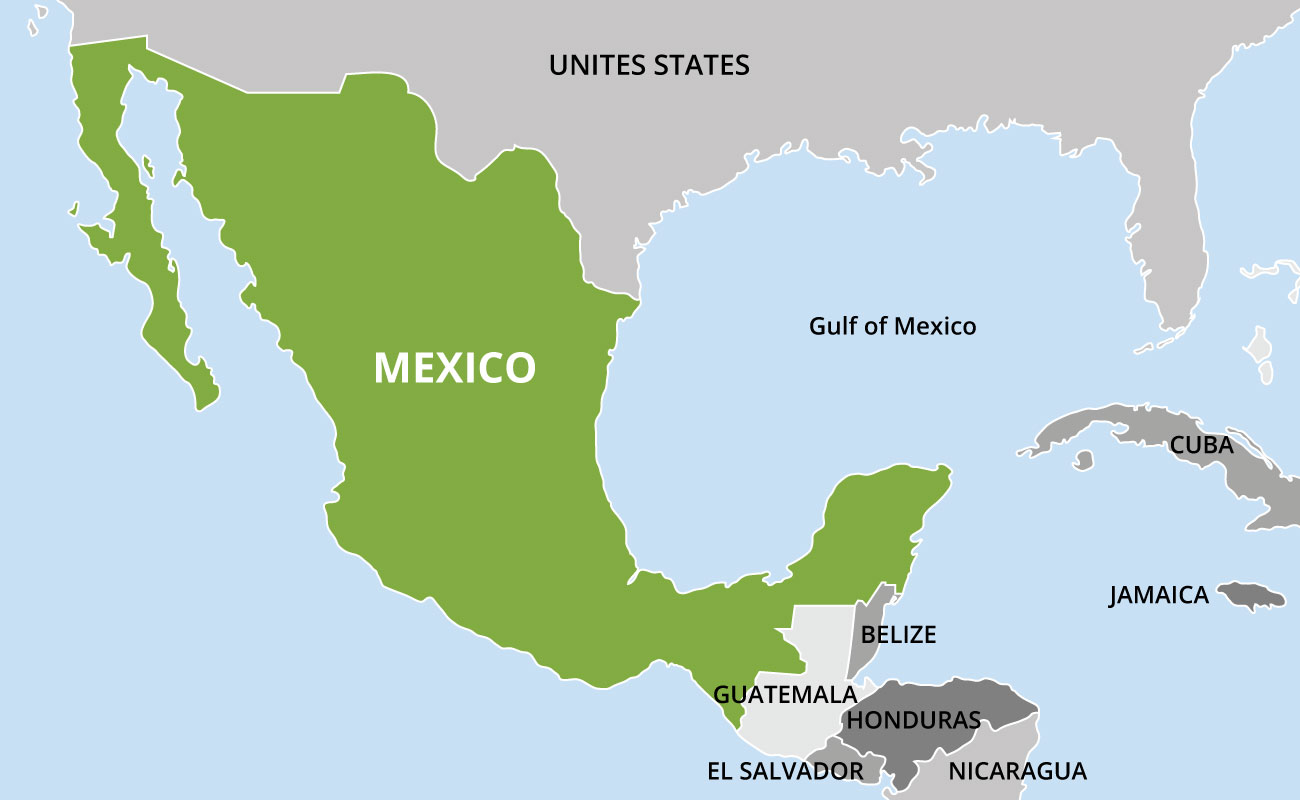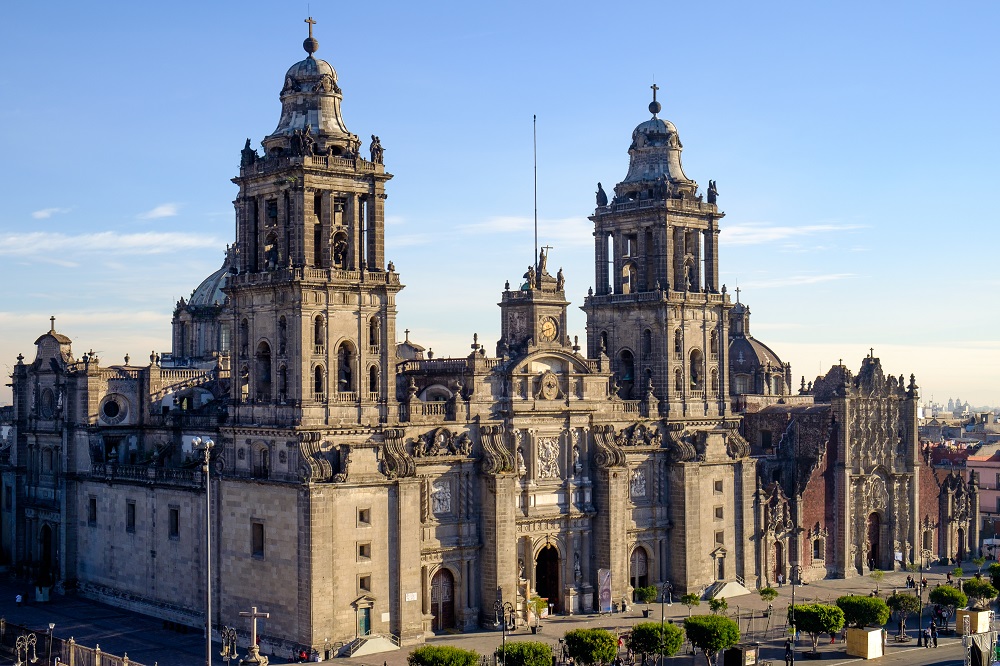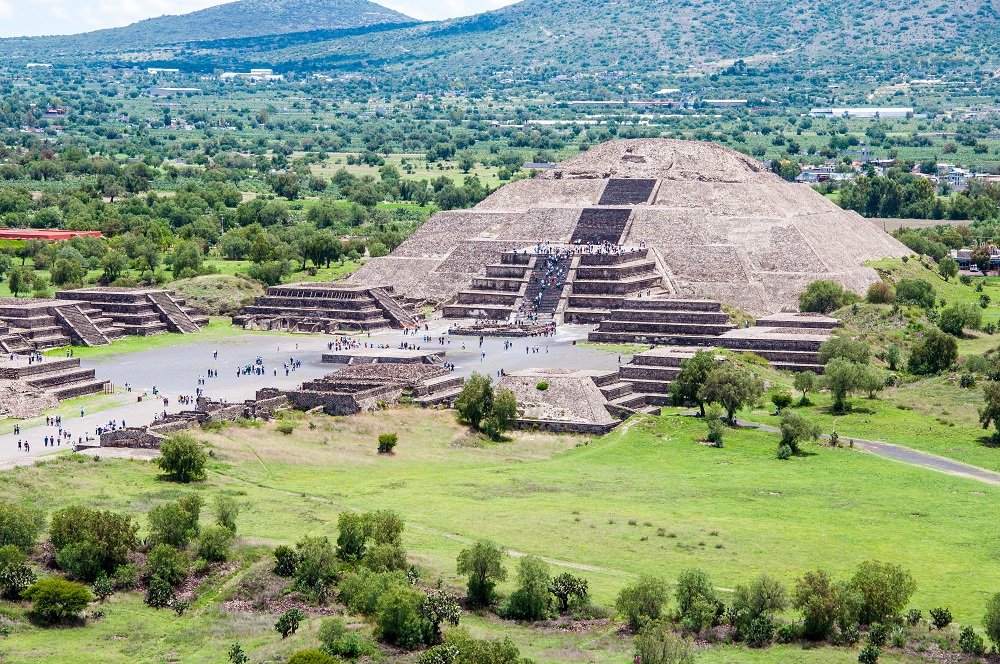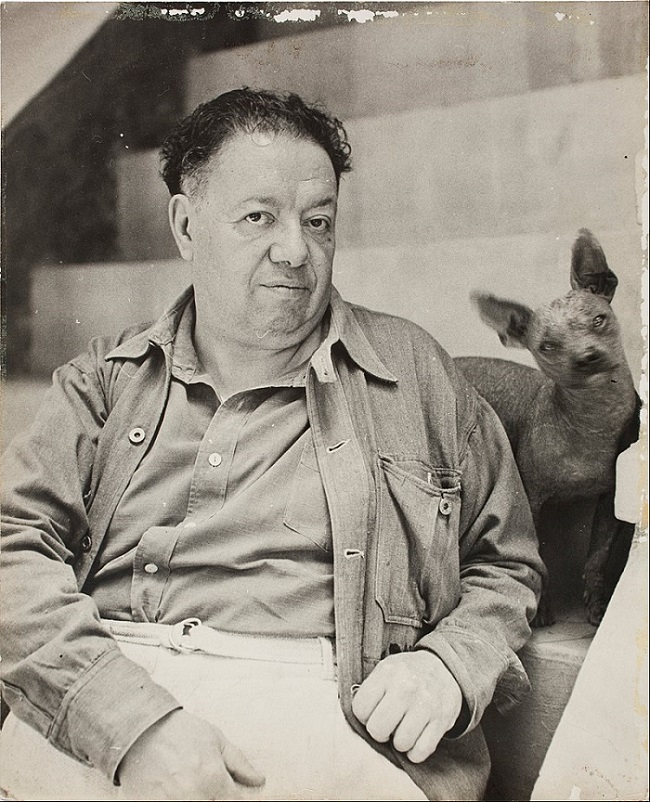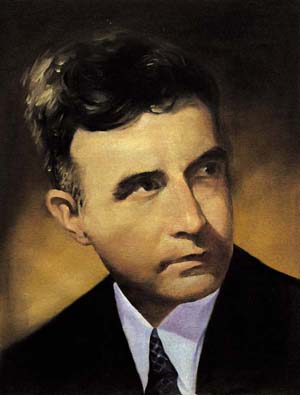
Music of Latin America: Mexico
In Mexico, a similar story unfolded. As in Peru, an indigenous musical tradition died out almost completely but was revived in the twentieth century by some classically trained Mexican composers. To understand this phenomenon, we must turn back to the pre-Conquest period. Before the Aztecs were conquered by Hernán Cortés (a distant relative of Pizarro's) in the early sixteenth century, they placed music in the hands of a professional elite. This group of trained musicians had to master an extensive repertory that corresponded to the Aztec calendar. Strict guidelines were observed. It is said that a mistake could cost a player his life.
As in Peru, churches and cathedrals were constructed after the conquest of the indigenous people. Especially important were those at Mexico City, Puebla, and Oaxaca, where the Catholic liturgy flourished. By the late 1520s, the Spanish Franciscan priest Juan de Padilla (c.1500-c.1544) was teaching singing to natives around Mexico City. A few decades later, he was pursuing the same activities on the other side of the Rio Grande in what is now the United States. Thus, the first Christian music heard in what is now the U.S.-in Texas, New Mexico, Florida, California-is the elaborate music of the Catholic liturgy, which is quite different from the simpler hymns of Protestant New England.
Like their Peruvian counterparts, Mexican composers of the eighteenth and nineteenth centuries essentially followed European models. Some wrote in the style of Italian opera while others imitated Spanish operetta, called zarzuela. Some composers were intrigued by the history and music of the Aztecs: Ancieta Ortega de Villar composed an opera, Guatimotzín, that makes use of indigenous music.In addition to public performances, private concerts of chamber music, salon music, or solo songs were often given in homes of the bourgeoisie.
Surprisingly, out of this European-oriented mentality came Manuel Ponce (1882-1948), one of the first Mexican composers to try to develop a national style. Ponce wrote a variety of works, some of which sound more like vernacular rather than concert music.
The Mexican Revolution began in 1910 and ended in 1921. Porfirio Díaz (1830-1915), the dictator who modernized much infrastructure but also grossly exploited workers, was overthrown in 1911. A tumultuous decade ensued, during which artists and musicians began to explore new avenues of expression.
The muralist Diego Rivera (1886-1957) glorified the indigenous past at the same time that he addressed the plight of the worker.
The Mexican composer Carlos Chávez (1899-1978) wrote several pieces inspired by the indigenous past. One of these, the Sinfonía India, uses several Aztec instruments. Note that "India" in the title refers not to the country in Asia but is Spanish for "Indian."
Curiously, the Sinfonía India was first performed not in Mexico but in New York, in 1936. Chávez's reputation in the U.S. was built on his ability to evoke the Aztec past, a "primitive" style that audiences found attractive.
Composer: Carlos Chávez
-
"Sinfonia India"
Composer: Carlos Chávez
-
"Sinfonia India" [ 00:00-00:08 ]00:07
Introductory melodic material
Composer: Carlos Chávez
-
"Sinfonia India" [ 00:08-00:34 ]00:26
Melody 1 (trumpet)
Composer: Carlos Chávez
-
"Sinfonia India" [ 00:34-00:40 ]00:06
Transition to melody 2 (percussion)
Composer: Carlos Chávez
-
"Sinfonia India" [ 00:40-01:14 ]00:34
Melody 2 (native theme), notice prominent piccolo
Composer: Carlos Chávez
-
"Sinfonia India" [ 01:14-02:20 ]01:06
Melody 3 (most substantial)
Composer: Carlos Chávez
-
"Sinfonia India" [ 02:20-02:48 ]00:28
Melody 4, played by different instruments, slower tempo, clarinet, flute
Composer: Carlos Chávez
-
"Sinfonia India" [ 02:48-03:04 ]00:17
Clarinet
Composer: Carlos Chávez
-
"Sinfonia India" [ 03:04-03:18 ]00:13
Bassoon and trumpet
Composer: Carlos Chávez
-
"Sinfonia India" [ 03:18-03:46 ]00:28
Solo violin
Composer: Carlos Chávez
-
"Sinfonia India" [ 03:46-04:12 ]00:27
Full ensemble
Composer: Carlos Chávez
-
"Sinfonia India" [ 04:12-05:10 ]00:58
Melody 5
Composer: Carlos Chávez
-
"Sinfonia India" [ 05:10-06:06 ]00:56
Melody 5 begins to build in intensity
Composer: Carlos Chávez
-
"Sinfonia India" [ 06:06-07:40 ]01:33
Percussion and volume increase
Composer: Carlos Chávez
-
"Sinfonia India" [ 07:40-09:05 ]01:25
Return of Melody 2
Composer: Carlos Chávez
-
"Sinfonia India" [ 09:05-10:14 ]01:09
Return Melody 4 (slow theme)
Composer: Carlos Chávez
-
"Sinfonia India" [ 10:14-10:44 ]00:30
Return of Melody 1
Composer: Carlos Chávez
-
"Sinfonia India" [ 10:44-12:44 ]02:00
Coda (ending), emphasis on one note throughout, with almost constant repetition. Prominent percussion, especially gourd and xylophone.
Composer: Carlos Chávez
-
"Sarabanda para cuerdas"
Silvestre Revueltas
Another twentieth-century Mexican composer inspired by indigenous cultures was Silvestre Revueltas (1899-1940). Like Rivera, he combined a leftist political orientation with his artistic sensibilities. His Sensemayá for symphony orchestra is based on a poem by Nicolás Guillén (1902-1989), an Afro-Cuban revolutionary poet. The poem describes the killing of a tropical snake symbolizing imperial power. The poem's onomatopoetic words ("mayombe bombe") suggest the beating of a drum, an instrument of primary significance in African music. All of these sounds and meanings come to life in Revueltas's score (see Discover Video).

Silvestre Revueltas
Composer: Silvestre Revueltas
-
"La noche de los mayas (arr. Limantour): Noche de los Mayas (Night of the Maya)"
Composer: 0
-
"Homenaje a Federico Garcia Lorca"





'Anti' is the likely origin of the word 'Andes', Spanish conquerors generalized the term and named all the mountain chain as 'Andes', instead of only the eastern region, as it was the case in Inca era.






